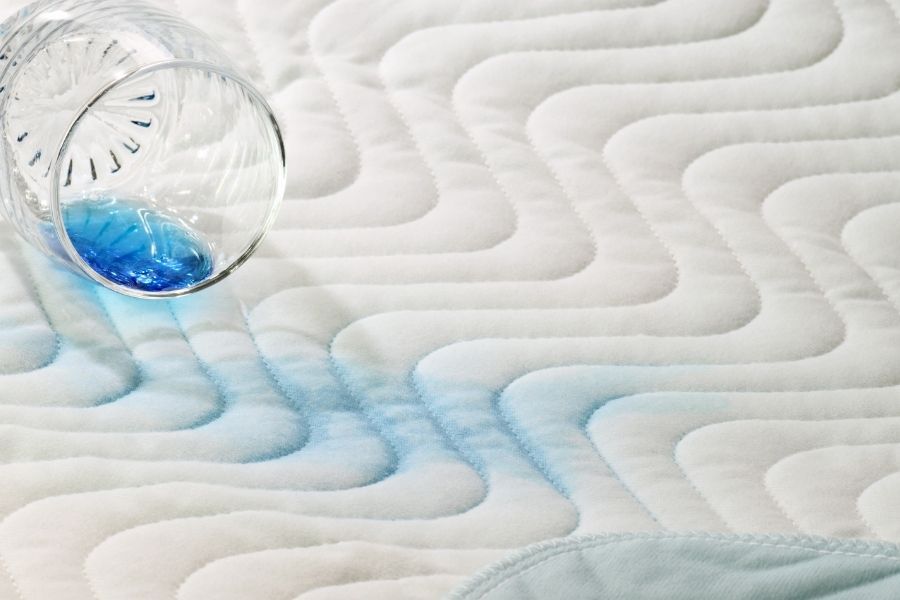
Incontinence Care
Different products are available for people who have poor bladder or bowel control (incontinence).
Adult Diapers
Adult diapers can be used when a person has urinary or bowel incontinence.
Look out for the following when choosing diapers:
- Size – user’s waist and hip size
- Ability to protect from leaks
- Ability to absorb liquid and prevent it from leaking
Barrier creams
People who wear diapers may develop sores or rashes on the area under or around the diaper. This is known as diaper rash and it may be caused by the skin being irritated by urine or fecal matter. You may protect the skin by using barrier creams when changing the diapers.
Look out for the following when choosing barrier creams:
- Does not feel oily
- Contain ingredients that help with the protective effect such as
- Silic 15 and silicone cream contain dimethicone helps to
- Protect the skin from water, chemicals and other irritants
- Relieve symptoms of rubbing and blistering
- Zinc oxide helps to
- Protect the skin and
- To treat and prevent diaper rash
- Contain ingredients with antiseptic function such as
- Cetrimide helps to
- Prevent an infection if there is any broken skin
- Cetrimide helps to
How to use
- Change wet and soiled diapers often
- Clean the affected area and allow it to dry
- Apply cream generously every time you change the diaper
Incontinence Pads
Some women above 40 year old may experience urine leaks when coughing, sneezing, running or exercising. Incontinence pads may be used in these women.
Incontinence pads can also be used by men who have light to moderate urine leaks
Look out for the following when choosing incontinence pads:
- Size
- Thickness
- Amount of liquid the pad can absorb compared to the amount of urine leaked by the user
Catheters
A catheter is a fine hollow tube which is placed into the bladder to drain the urine out. It is important to note that catheters should only be used if your doctor advises you to do so.
Healthcare professionals can help you to choose the most suitable urinary catheter for the user. Using a right catheter is important in preventing any risks and problems related to the use of a catheter. It can also improve the user’s comfort and quality of life.
When is a catheter needed?
A catheter is needed when the patient
- has bladder problems such as
- incontinence (leaking of urine)
- urinary retention (unable to empty the bladder fully)
- bladder blockage
- is unable to move around freely
Look out for the following when choosing catheters:
Material |
|
Size | Catheter sizes are commonly measured by the Charrière size (Ch). This refers to the outer diameter of the catheter. One Ch is the same as 0.33mm. Therefore a 12Ch catheter is has an external diameter of 4mm. Other units of measurements are French gauge (Fg) or French (F). The diameter size is important to ensure that the user is comfortable. A large Charrière size can cause discomfort and injury to the bladder. In general, a catheter with the smallest possible diameter that can allow enough urine to be drained should be used. |
Length |
|
Sex of the patient | Male Catheters Female Catheters |
One-time use only or can be re-used |
|
Types of catheters
Foley |
|
Intermittent | One-time-use plastic catheter used for intermittent self-catherisation (ISC). ISC is used to drain bladders that do not empty fully. The patients are taught to insert the caterers themselves and are able to do so at certain time intervals. |
External |
|
Product | Features |
Uno® Foley Catheter |
|
Uno® 100% Silicone Foley |
|
Other Incontinence Accessories
Lignocaine gel may be used to reduce pain and to make it easier to insert the catheter. Stop using immediately and see a doctor if there is any skin irritation.

Drainage Bag
Drainage bags are used with catheters or by men using penile sheaths
Look out for the following when choosing drainage bags
- Amount that the bag can hold
- Larger volume for overnight drainage
- Smaller volume for outdoor use. This allows the user to hide the bag under the clothing

Sheaths
A sheath is a soft sleeve which fits over the penis to collect urine and is attached to a leg drainage bag. It may be used as another option to pads.
Look out for the following when choosing sheaths:
- Materials
- Latex (latex is not suitable for people allergic to rubber)
- Non-latex
- Size
Connectors
This joins the catheter to any regular urine bag and provides maximum drainage. A leg strap can be used to hold the connector in place. Non-allergic sticky tapes can be used to hold the catheters in place and prevent the urine from flowing back from the bag.

Urinals
Urinals are suitable for people who have problems moving around. They are long-lasting, easy to bring around and can be recycled.
Bedpans
These are easy to use for patients who are unable to move. The contoured shape provides extra comfort, and the polyethylene plastic makes the bedpan lightweight and free from strong smells.
Contoured bedpan - made for greater comfort and will remain stable even on soft mattresses. Easy-grip handles can be found on both sides and the front.
Fracture bedpan - suitable for patients after surgery. The low wedge shape allows the caregiver to move it in and out of position without moving the patient. Easy-grip handle can be found on the back.

Mattress Protectors
Fitted Drawsheets
These come in Single and Queen sizes and are fitted over the mattress to protect it from soiling.
Underpads
These are smaller and come in 2 sizes. Underpads can be placed under the patient’s backside on the bed to prevent urine and fecal matter from leaking onto the bedsheets.

Updated June 2023
.png)



















































